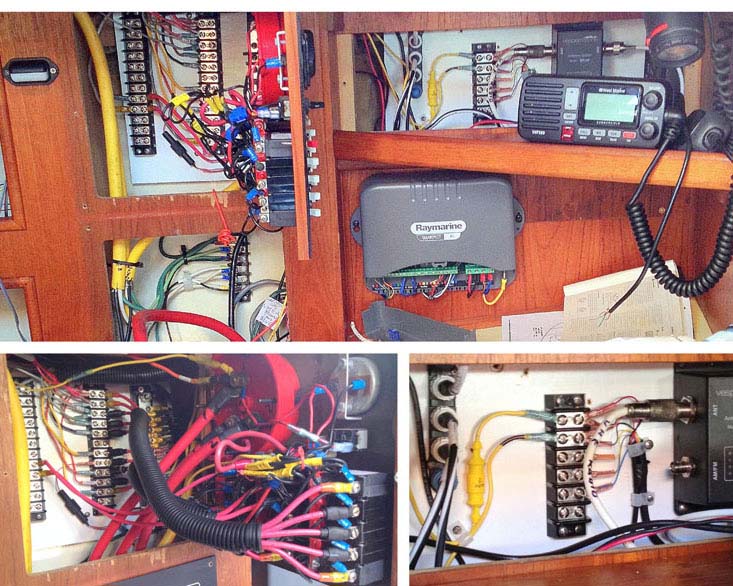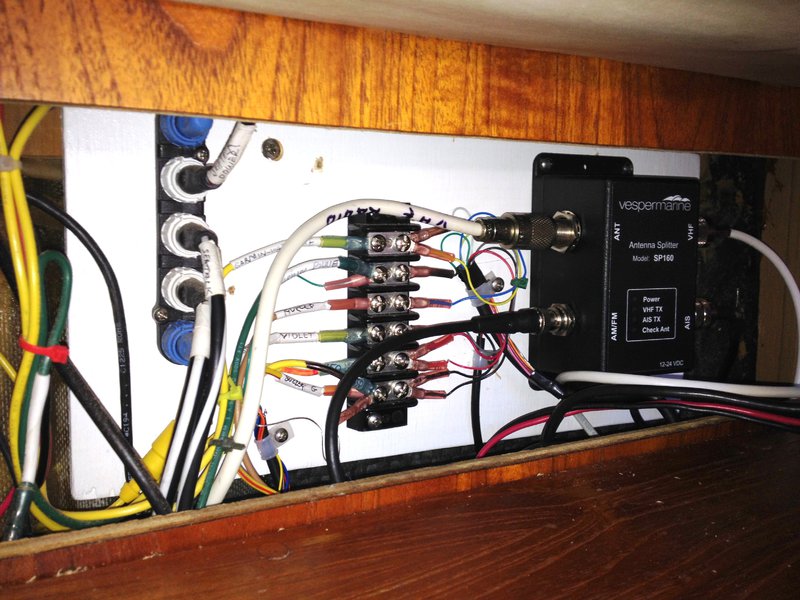I need to update my (very old) electronics. I am thinking of something like an ICOM VHF / Vesper AIS transponder (like Watchmate 8000) with splitter / chartplotter; I dug through the back of my breaker panel today and decided there is room back there to cram it in, and maybe wouldn't be too hard to do myself, which would be nice in terms of cost reduction.
There are naturally an infinity of possible solutions; I am curious about simple "what would you get that works well together if you were doing it" so I have a decent starting point.
--> I would appreciate any suggestions; what would you do now (2022) for integrated VHF/AIS/plotter?
Especially useful is anything along the lines of "just go to an expert because..." or "I installed XYZ myself and X, Y, and Z are working great together".
Thanks in advance; perhaps the best thing about getting my Ericson (34-2 ish) is the amount of friendly assistance I have gotten from this forum, all of which has been incredibly appreciated.
PS: More details, if anyone wants them:
Is the redundancy of getting a VHF with AIS useful if I also have a Vesper? I would like to be able to make a DSC call without typing in MMSI's, by just clicking; unsure what degree of integration is required to get that. I also want the AIS to plot on a chartplotter, and am unsure if it matters that ICOM VHFs seem to be NMEA 0183 while presumably all new plotters are NMEA 2000, so maybe I have to choose which of the two the Vesper would communicate with.
Self-installation seems tractable to me (and more attractive since the local experts seem heavily overbooked and have little time to discuss it), but I would hate to make poor connections out of ignorance (wrong crimper technique?) and have it cost me when it matters. Curious about DIY success stories/warnings.
I will probably get a smaller plotter I can attach the the pedestal with a side-mount (as I currently have), mainly because doing a nav pod mount would require removing all my old instruments and having to replace them, since they are too old to integrate with an NMEA system. I hear good things about Raymarine, Axiom but am unsure if it would be friendly to mount in this configuration. I would probably just use an iPad when below -- the plotter would ideally have wifi so I could do that. What I have at the helm just has to enable me to get home when I am stuck at the helm, not lay out my whole trip.
Lastly, I am trying to avoid mast work -- so would like to leave the existing antenna and coax in there. I realize that should be attended to someday, but ideally not now... unless AIS/VHF cannot work without a new antenna (existing antenna is 24 years old, predating AIS.)
There are naturally an infinity of possible solutions; I am curious about simple "what would you get that works well together if you were doing it" so I have a decent starting point.
--> I would appreciate any suggestions; what would you do now (2022) for integrated VHF/AIS/plotter?
Especially useful is anything along the lines of "just go to an expert because..." or "I installed XYZ myself and X, Y, and Z are working great together".
Thanks in advance; perhaps the best thing about getting my Ericson (34-2 ish) is the amount of friendly assistance I have gotten from this forum, all of which has been incredibly appreciated.
PS: More details, if anyone wants them:
Is the redundancy of getting a VHF with AIS useful if I also have a Vesper? I would like to be able to make a DSC call without typing in MMSI's, by just clicking; unsure what degree of integration is required to get that. I also want the AIS to plot on a chartplotter, and am unsure if it matters that ICOM VHFs seem to be NMEA 0183 while presumably all new plotters are NMEA 2000, so maybe I have to choose which of the two the Vesper would communicate with.
Self-installation seems tractable to me (and more attractive since the local experts seem heavily overbooked and have little time to discuss it), but I would hate to make poor connections out of ignorance (wrong crimper technique?) and have it cost me when it matters. Curious about DIY success stories/warnings.
I will probably get a smaller plotter I can attach the the pedestal with a side-mount (as I currently have), mainly because doing a nav pod mount would require removing all my old instruments and having to replace them, since they are too old to integrate with an NMEA system. I hear good things about Raymarine, Axiom but am unsure if it would be friendly to mount in this configuration. I would probably just use an iPad when below -- the plotter would ideally have wifi so I could do that. What I have at the helm just has to enable me to get home when I am stuck at the helm, not lay out my whole trip.
Lastly, I am trying to avoid mast work -- so would like to leave the existing antenna and coax in there. I realize that should be attended to someday, but ideally not now... unless AIS/VHF cannot work without a new antenna (existing antenna is 24 years old, predating AIS.)







